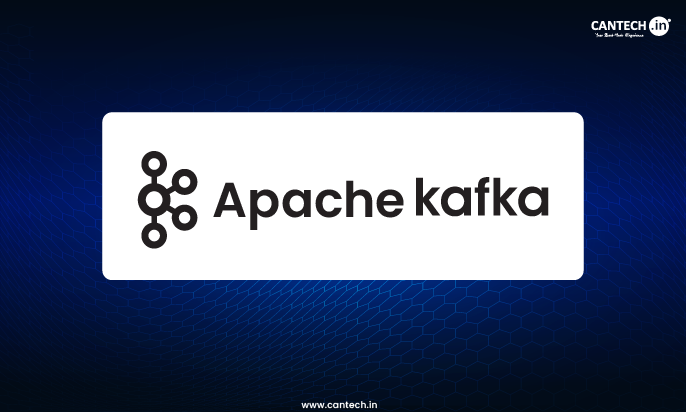Let’s be honest: if you’ve ever used Docker for anything beyond a “Hello World” container, you’ve probably experienced one singular pain point: your disk space is mysteriously vanishing. You run a few images, do a few experiments, and all of a sudden Docker is holding onto gigabytes of data on your local machine like a digital squirrel.
Before you know it, you’re searching Google on how to delete Docker images only to find a series of dry command references with just the command and no context. Does that sound like you? Well, don’t worry too much.
In this guide, we will walk you through everything you need to know about deleting Docker images. By the end of this guide, you will not only know the command necessary to remove Docker images, but also know when to use it and how to safely use it to ensure you never run into the same clutter again!
What is Docker?
Docker is an open source platform that allows developers to automate the deployment of applications within lightweight, portable containers. Additionally, you have an app that works perfectly on your machine. But when you share it with someone else, it breaks because it is not the same environment (library versions, OS, config).
Docker is an easy way to configure your app and everything that it needs (code, runtime, dependencies) into one unit called a container. Docker is attractive to developers because of its several benefits:
It is portable and works on any system.
It is consistent and efficiently works the same in development and production
It is efficient, and lightweight compared to a full virtual machine.
Now that we have learned what is Docker? lets learn about Docker Images.
What Are Docker Images?
A Docker image is a read-only template that includes application code, a runtime, libraries, environment variables, and everything your application will need to run. Think about it like a recipe. And when you run the recipe out? You get a container. Each time you run a command like,
docker run ubuntu
Docker will search for the Ubuntu image and then create a container from that image. There are certain key points to keep in mind:
Images are immutable. They don’t change – ever, once created.
Images are layered. Every instruction in the Dockerfile will create a layer.
Images can either be pulled from a registry like Docker Hub, or they can be created using a Dockerfile.
So, when you are building and testing often, you will have Docker simply creating image layers all the time. Unless you strike out the layers, they will stick around – taking up disk space and cluttering your development environment. That is why it is important to understand how to delete Docker images.
Why Your Docker Images Accumulate & Why Should You Care?
Imagine if your fridge housed every version of everything you ever purchased: 3-year-old milk, 10 different cheese brands, and seven different types of ketchup. That’s what you’re doing when you fail to get rid of Docker images.
Docker images are the underlying structure for your containers. Every time you build a new version or download a new tag, a new image or a layer of image is in the house.
And guess what?
Docker isn’t deleting it unless you tell Docker to do so!
So, why should you care?
Storage Usage: Old images use hard drive storage.
Security: Older Docker images may have vulnerabilities.
CI/CD Health: Clogged runners result in slower builds and broken pipelines.
Docker Images vs Containers
| Term | What is it? | Is it possible to Delete? |
| Image | It is a read-only blueprint for containers. | Yes |
| Container | It is a running or stopped instance of an image. | Yes |
An image is the recipe for creating containers; the container is the dish served. Deleting the image will not affect any running containers dependent on it unless it does, and there lies the golden rule. Don’t delete images your containers are still dependent on; while there could be run-time containers, be safe.
How to Remove Docker Images?
Let’s have a quick look at various ways to remove docker images!
Step 1: To remove a specific Docker Image.
Do you have any specific images that you want to discard?
docker rmi <image_id_or_name>
For instance, let’s say:
docker rmi ubuntu:18.04
Step 2: To delete a Docker Image forcefully.
Use the following command, to forcefully delete a Docker image.
docker rmi -f <image_id_or_name>
Step 3: Remove Dangling Images.
Dangling images can be defined as layers that do not have a tag.
docker image prune
docker image prune -f
This command is helpful when you want to clean up safely since it only cleans up images with no containers pointing to them.
Step 4: To Remove All Unused Images
Leverage using the following command to delete all images not used by the container – whether tagged or dangling.
docker image prune -a
For automation purpose, simply add:
docker image prune -a -f
Step 5: To Remove All Docker Images
Run the following command when you want to clean everything and look to start something new.
docker rmi -f $(docker images -q)
Here, all the image IDs are listed with docker images -q.
Step 6: Complete System Prune
docker system prune -a
As a result, you can easily remove images and unused containers, networks, and volumes.
Steps to Find What to Delete
Follow a few simple steps to find what you need to delete!
List down the tools!
docker images -a
Run the command to list all the images.
docker images –filter “dangling=true”
To display only dangling images, run:
docker image inspect <image_id>
Thus, it will help identify the images that are safe to remove!
Conclusion
Cleaning up Docker images is more than just clearing up disk space; it’s the mindset of clean, intentional development. If you don’t do image clean up, you’re effectively building for the software on a landfill of old builds and broken containers. So take the time and schedule your cleanup.
Frequently Asked Questions
1. Which command is used to remove Docker images?
To remove the Docker images, you are required to run the following command:
docker rmi <image_id_or_name>
Or
docker image rm
2. Is it possible to delete all the Docker images at once?
Use the command to delete all the Docker images at once:
docker rmi -f $(docker images -q)
Hence, it will remove all the images that are listed by Docker.
3. Mention the difference between docker rmi and docker image prune.
The docker rmi is used to delete specific images by ID or name, whereas docker image prune is used to remove dangling images automatically.
4. Can I remove unused Docker images safely?
The only alternative is to prune images not utilized by any containers.
docker image prune -a
Simply add -f to skip confirmation in scripts:
docker image prune -a -f
5. How can I remove dangling Docker images?
Dangling Docker images can be removed using:
docker image prune
Basically, they are intermediate tags that are not tagged and referenced by containers.
6. How can I delete the Docker image that is still being used?
The Docker will prevent the deletion unless it is being forced:
docker rmi -f <image>
Doing so may even break containers that heavily depend on containers.






